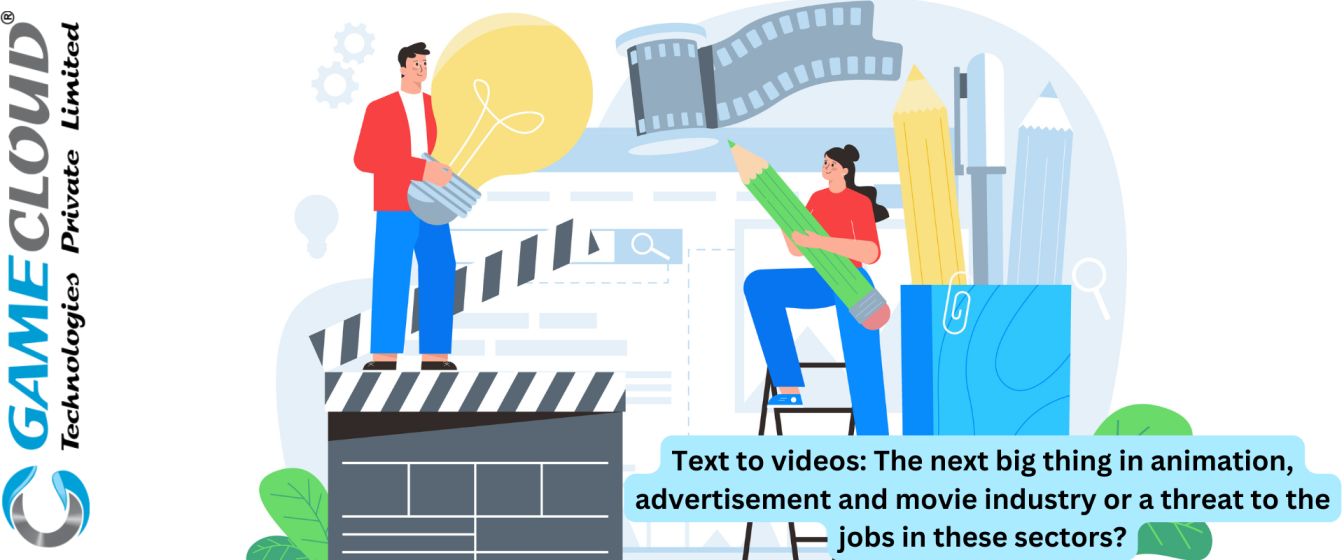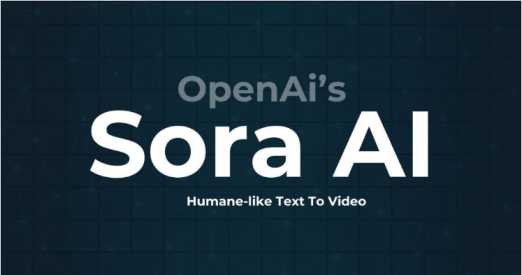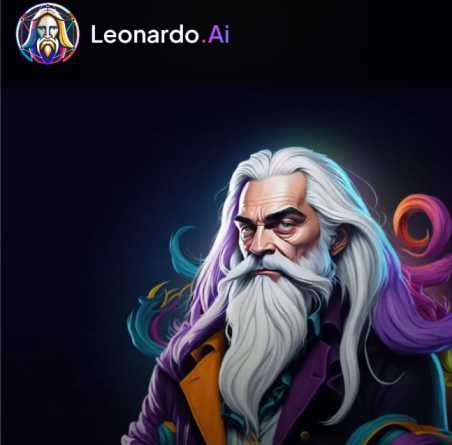
Text-to-video technology is a rapidly evolving field that has the potential to revolutionise the animation, advertisement, and movie industries. With AI-driven tools, animators can create more realistic and life-like visuals than ever before, offering a range of benefits such as improved accuracy, faster generation time, and the ability to create highly sophisticated animations. However, this technology also poses significant challenges, particularly in terms of job displacement and ethical concerns.
The animation industry is already experiencing the impact of AI, with AI-based facial recognition systems being used to animate characters more accurately and efficiently, and AI algorithms being used to analyse a video’s content usage and suggest optimal placements for video advertisements. Motion capture technology is also being enhanced by AI, making it easier to create more realistic animations. Additionally, AI can be used to generate storylines and even create fully-fledged animations using only a few inputs, making video production more accessible to a wider range of users.
Despite these benefits, the integration of AI in the animation industry has also raised concerns about job displacement. A study by the Hollywood Reporter found that generative AI poses a significant threat to workers in the entertainment industry, with sound engineers, voice actors, concept artists, and entry-level positions being particularly vulnerable. The report estimates that nearly 204,000 positions will be adversely affected over the next 3 years.

In the movie industry, AI-generated visuals are becoming increasingly sophisticated, with hyper-realistic videos being produced by text-to-video models. This technology has the potential to disrupt the film and TV industry, with rights-holders facing new challenges in protecting their works and managing the exploitation of AI-generated content.
In the advertising industry, AI-driven tools can analyse storytelling patterns, predict audience preferences, and even assist in scriptwriting, adding a data-driven dimension to storytelling. However, the use of AI in advertising also raises ethical concerns, particularly in terms of privacy and data protection.
To mitigate the potential negative impacts of AI on the animation, advertisement, and movie industries, it is essential to strike a balance between human creativity and AI capabilities. Animators and other industry professionals must adapt to the integration of AI by learning how to work alongside AI and understanding its capabilities, which can enhance career prospects in the evolving industry. Additionally, rights-holders must work with AI developers to protect their works and create new revenue streams, while also considering the ethical implications of AI-generated content.
Ankatmak, a division of GameCloud Technologies, specialises in AI outsourcing, engineering, and IT consultancy, offering services like AI-assisted content creation, chatbots, and custom AI solutions. Our expertise in diverse engineering skills and cutting-edge AI solutions aligns with the innovative potential of text-to-video technology in the animation, advertisement, and movie industries. By deploying AI capabilities, we can enhance the development of advanced animation techniques, streamline content creation processes, and provide tailored solutions for clients navigating the complexities of the digital landscape. With a team of over 70 professionals and a commitment to quality service delivery, we stand out for our unique approach of offering free pilots to new customers, ensuring satisfaction before payment. Located in Pune, we embodies GameCloud’s vision of harnessing AI for innovative solutions across various technical domains, making us a valuable partner in the evolving landscape of animation and digital content creation.
Exploring Other Text-to-Video Generators and Tools
In addition to Sora by Open AI, there are several other text-to-video generators and tools that are making waves in the industry. One such tool is Leonardo AI’s Motion, which allows users to turn generated images into short video clips with impressive results. Built on top of Stable Video Diffusion, Motion can work with any image style and produces between three and four seconds of footage.
Another tool to watch is Realtime Gen, which is built on SDXL Turbo and allows for AI image generation as you type. This feature is particularly useful for testing prompt ideas without waiting for a full image to generate.
These tools, along with Sora, demonstrate the rapid advancements in text-to-video technology and its potential to revolutionise the animation, advertisement, and movie industries. As these tools continue to evolve and improve, they will likely have a significant impact on the job market and ethical considerations in these sectors.
Leonardo AI’s Motion tool is a recent addition to the text-to-video generator landscape, offering basic capabilities like background motion and other visual effects. While it is a promising development, it is not as advanced as other tools such as Runway and Stable Diffusion Video, which offer more options for generating better output.

Runway and Stable Diffusion Video are currently considered the leaders in producing highly realistic and natural-looking video, with advanced models that create smooth, believable motion and animation. Both tools have been praised for their ability to generate high-quality videos that closely adhere to user prompts and instructions.
In terms of customisation options, Leonardo AI and Runway provide the most control over length, resolution, frame rate, camera motion, styles, and other video parameters. However, Stable Diffusion Video’s recent addition of video generation models, SVD and SVD-XT, has shown promising results in generating high-quality video clips.
While Leonardo AI’s Motion tool is a step in the right direction, it is not as advanced as other text-to-video generators such as Runway and Stable Diffusion Video. These tools offer more options for generating high-quality, realistic videos that closely adhere to user prompts and instructions.
The next big thing in animation, advertisement and movie industry
Text-to-video technology is revolutionising the animation, advertisement, and movie industries by offering a new level of efficiency and creative freedom. OpenAI’s Sora is a pioneering text-to-video AI model that has the potential to fundamentally change how content is conceived, produced, and delivered in these sectors.
Sora’s advanced video generation capabilities significantly streamline the traditional animation process, allowing animators to generate complex scenes and intricate character movements from simple text descriptions. This not only speeds up production timelines but also lowers the barriers for creating high-quality animations, making it more accessible to a broader range of creators.
In marketing, Sora’s ability to swiftly generate tailored, high-quality video content enables marketers to engage with their audiences more effectively, adapting to the ever-changing digital landscape with agility and precision. The potential for hyper-personalised and rapidly produced video content could redefine audience engagement and improve the overall effectiveness of marketing campaigns.
While Sora is a significant advancement, it is not the only text-to-video generator on the horizon. Other tools like Leonardo AI’s Motion, Google’s Transframer, NVIDIA’s NeRF, Runway’s Gen2, and KaiberAI are also making strides in this field. These platforms offer various features like image-to-video conversion, 3D rendering, and customisable clip lengths, demonstrating the rapid advancements in text-to-video technology.
The integration of AI in the animation, advertisement, and movie industries is not without its challenges, however. Ethical considerations, such as the potential for deepfakes and misinformation, will need to be addressed as these tools continue to evolve. Hollywood will need to tread carefully to ensure that these tools are used ethically and thoughtfully.

Text to videos: A threat or boon
Text-to-video technology presents both opportunities and challenges in the animation, advertisement, and movie industries. While these tools offer the potential to revolutionise content creation processes, they also raise ethical concerns and pose a threat to traditional workflows and human creativity.
Challenges
- Ethical Concerns: The potential for deepfakes, misinformation, and intellectual property rights infringement raises ethical dilemmas that need to be addressed.
- Job Displacement: The automation of certain tasks, like background roles or storyboard visualisation, could lead to job displacement in the creative industries.
- Quality and Realism: Current limitations in the realism of generated characters, complexity of scenes, and emotional depth of content may impact the overall quality of AI-generated videos.
Opportunities
- Efficiency and Accessibility: Text-to-video generators like Sora by OpenAI streamline production processes, making it easier and faster to create high-quality animations and videos.
- Marketing Advantages: These tools enable the rapid generation of tailored, engaging video content for marketing purposes, enhancing audience engagement and campaign effectiveness.
- Cost-Effective Solutions: Text-to-video technology offers efficient and cost-effective solutions for content creation, benefiting various sectors like education, healthcare, and marketing.
Predictions
- Industry Impact: Text-to-video technology is likely to impact various sectors beyond entertainment, influencing how content is created and consumed across different industries.
- Regulatory Framework: The development of ethical guidelines and industry standards will be crucial to prevent misuse and ensure responsible use of AI in content creation.
- Advancements: Future advancements may include real-time video editing, more nuanced emotional expressions, and the ability to generate full-length feature films from text prompts, further blurring the line between human and AI-generated content.
The evolution of Text to video in animation, advertisement and movies industry
The evolution of text-to-video technology in the animation, advertisement, and movie industries has been transformative, offering new possibilities and challenges. In 2024, the market size of text-to-video AI was valued at USD 122.5 million, with a projected CAGR of over 35% from 2023 to 2032, indicating significant growth and adoption of video content tools for marketing purposes.
Recent advancements in AI animation video generators, like Neural Frames and VideoScribe, have revolutionised the creation of engaging animated videos with AI assistance, enabling users to produce high-quality content quickly and efficiently. These tools leverage AI algorithms to convert text into dynamic videos, blurring the lines between human creativity and machine-generated content.
Futuristic projections suggest that text-to-video technology will continue to disrupt traditional filmmaking and storytelling norms. While these tools offer unprecedented opportunities for creativity and efficiency, they also pose a threat to human roles in the industry, potentially revolutionising the very fabric of Hollywood. The integration of AI in film production is expected to lead to further advancements in pre-production processes, marketing content creation, and potentially even the creation of lifelike 3D animations without physical actors.
Conclusion
While text-to-video technology offers significant benefits to the animation, advertisement, and movie industries, it also poses significant challenges, particularly in terms of job displacement and ethical concerns. To fully harness the potential of AI in these sectors, it is crucial to strike a balance between human creativity and AI capabilities, and to address the ethical implications of AI-generated content.
